The Morning at Oświęcim
“Never shall I forget those flames which consumed my faith forever.” Elie Wiesel, Night
I woke early that morning in a search for a good cup of coffee after the late night flight in from Spain. The square of Oświęcim was quiet – golden in the morning sunlight – and peaceful. The occasional car passed, a municipal worker emptied a trash bin into a small truck. But mostly it was sleepy, like the rest of the town appeared to be at this hour.

I wondered what it might have been like in those early years of the 1940’s, whether it was a center of commotion as German officers and soldiers arrived from the front or from the west; whether, if one looked up at the sky, they would have seen smoke billowing from the stacks of the IG Farben plant, or from the camp to the west of town if the wind was blowing right.
But this morning it was calm. The faint smell of wood fires hung in the air from household stoves – a common way for the Poles to heat their old homes – and the smell of wet stone and iron from the cobbled streets and railings, damp with the morning dew.
Approaching the Camp
After breakfast, I drove to the camp with a mix of apprehension and anticipation that is difficult to describe. Of course, I had always wanted to visit Auschwitz, but now that I was here and nearing its gates, I wasn’t sure if the emotion – the weight of its tragic existence – would just make the experience more of a depressing and disheartening one than one inspiring remembrance and reflection about the past, as it is intended.
The visitor’s center is designed so that you can’t just pull up to the gates in an unceremonious way. I parked, entered the building along with hundreds of other tourists, and waited until my group’s departure time arrived, scheduled to begin every fifteen minutes behind a guide. They make you wait in a modern visitor’s center, as if to remind you that entry here should never be casual.
First Steps into Auschwitz I
The tour began down a long sunken walkway made of slate gray concrete, the world disappearing from sight and removing any distractions from the mind other than the sound of footsteps. Those murdered here in their first moments after arrival would not have had a totally dissimilar experience: a march down a crowded and narrow hallway leading to a subterranean gas chamber. Whether it was planned that way, I don’t know, but either way, the experience was sobering.
Over a speaker, names of the victims were announced one-by-one as we walked, a few seconds’ pause in between, allowing the name – no, the person – to live inside our heads for a few moments before the next was heard. One could be there for months and not hear the full list.
The pathway then met with a ramp, and slowly we emerged into Auschwitz I, passing under a gate adorned with the phrase Arbeit Macht Frei in iron letters – the cruel and misleading German phrase meaning “work will make you free,” intended to give a false sense of hope to those who would see it. The site is preserved more or less how it was in 1945 – the buildings, sturdy, tall, and made of brick, are imposing, yet look like they could easily be just made to house boy scouts for summer camp or dorms on an old college campus. They looked comfortable even, a thought that I immediately felt guilty for having even entered my mind.
I was confused, as I remember pictures of Auschwitz featuring long, narrow, shoddily constructed bunkhouses, barely suitable enough to house chickens, let alone human beings. Those were here, our guide said, but at Birkenau, a few kilometers to the west, outside of town.
Auschwitz I, no less sinister than its massive counterpart, functioned as the administrative hub for the two camps – and the place where now infamous medical experiments were carried out, as well as the home to an experimental gas chamber, and the residence of the commandant. It was right in the middle of Oświęcim, designed to hold around 15,000 prisoners, and was the place where the Nazis would perfect the tools and methods of mass extermination that was carried out in Auschwitz II/Birkenau. The poplars that lined the roadway in perfectly spaced rows were tall and narrow. They added a symmetry and order which reminded me of the precision with which the Nazis ran the place so many years ago. The roots dug into a ground where no living thing probably wanted to be, yet here they were, making Auschwitz strangely beautiful and serene on this chilly spring morning, if a word such as that could be used to describe a place as horrible as this.
Building Fourteen and the Evidence of Lives
We were led into the infamous building fourteen, which during the camp’s years of operation was home to the sinister rooms where experimental “medicine” was performed, as well as a basement level filled with solitary confinement cells and places to carry out experimental torture.
Today the building is home to an exhibition. There were belongings of the victims piled behind glass windows: thousands of shoes, bowls, suitcases, prosthetic legs; an entire room of human hair, harvested by the Nazis to make blankets, socks and gloves. Lining all the hallways were mug shots taken by the Germans of the newly interned in their horizontal striped gowns, some even smiling for the camera as if they did not yet understand where they were.
The Photograph of Two Boys
I was struck by a large photo in the first room we entered. It was like many others that probably come to your mind as you picture a history book’s portrayal of the camp: groups of prisoners being pulled out of a train car and put into a line – but here in this one, almost out of the frame were two boys, about eight and four, the older clutching the other’s hand with a mustered up courage and a look of confusion about what was to happen next after having just climbed down from the train. The younger, bundled up in winter clothes, stands with a look of similar confusion, not panicked given his brother’s reassuring grip, but with furrowed brows and a look in his eye that four year olds have when they just want to be home after a long day outside. Their parents are nowhere to be seen.

The scene haunted me. It still does today. As I looked at those boys I knew they had but moments to live and in their eyes and faces I saw Jacob and Owen. They say that a million dead is a statistic, but one is a tragedy. Those boys spoke to me of the tragedy that happened at this camp 1.1 million times over in a way that I had never felt until now, as a father, imagining my boys subjected to a similar fate. Tears ran down my face and suddenly I began to wish that Jenn and the boys had already arrived in Poland and I was no longer on that tour. But it had only just started.
The Machinery of Death
Our guide gathered the group and told us more of building fourteen, its detention cells in the basement, some only a few feet high meant to physically torment its occupants by putting them in a state of terrible discomfort for days on end. She was very matter of fact. No emotion at all in her voice, but after each statement or description of our surroundings she left a brief pause – as if to say let that sink in. She pointed out that in the brief time that we had been on our tour so far, we had already been in Auschwitz longer than the vast majority of its victims. The time between disembarkation from the trains and meeting their fate in the gas chambers was shockingly short, usually only about 30 to 90 minutes.
Arrival at Auschwitz II–Birkenau
The tour resumed after a short shuttle to Auschwitz II, what most picture as “Auschwitz”: the long straight railway track leading under the entrance gate, the vast grid of bunkhouses, the now demolished gas chambers whose smokestacks once spewed out the putrid smell of burning bodies. Much of what was there in 1945 is now demolished, either destroyed after the war by its liberators, or by the Nazis just before its capture in a vain effort to cover their tracks.
It was a different kind of experience than in Auschwitz I. The physical reminders less tangible and requiring more imagination – if one dared to imagine such a place – to picture what it may have looked like seventy years ago. We walked between the rows of bunkhouses, marked only by a rectangular gravel footprint and a small brick chimney, all that remained after the buildings were frantically burned to the ground by the SS in January 1945 as the Red Army pressed in.
The vastness of it all was incredible. Birkenau, its name derived from the birch trees which grew in abundance here, was such a pleasant name for a place. And it was, if one looked beyond the tall barbed wire fences to the Polish countryside. Fittingly though, it had a sense of deadness now. One could sense how much commotion and chaos would have existed when 100,000 prisoners were held here at its peak in 1944. And yet now it was eerily silent. The harsh call of crows only being broken by the gravel footfalls of the tour groups. Most walked along in silence, as if there was some unspoken rule that to even talk in this sacred space was taboo.
The Silence and the Weight of Memory
It was almost too emotionally draining to think too hard about it all and I can’t imagine how our guide did it. Maybe that was the reason for her monotone voice, coming across like she was just there to recite facts and nothing more; maybe she was protecting herself from having to relive the horrors every day. Her grandfather, she said, grew up next door to a boy that died here. Myself even, seventy years removed, am “neighbors” with a Dutch woman deported and murdered here in August of 1942, Jenny Polak-Wertheim was her name, memorialized on a brass tile on the sidewalk in front of her home in Amstelveen. It’s mind blowing to think of how many lives were touched, or destroyed, by the existence of this place.
Leaving with the Living
As we finally left and boarded the shuttle back to Auschwitz I, I could still see those boys in the photograph. I pictured mine and I missed them. In a few more hours I’d pick them up at the airport in Krakow, and I told myself I’d give them a long hug for those boys, scared and confused and longing for one more moment like that with their mom or dad. What a gift it was that I could still do it.
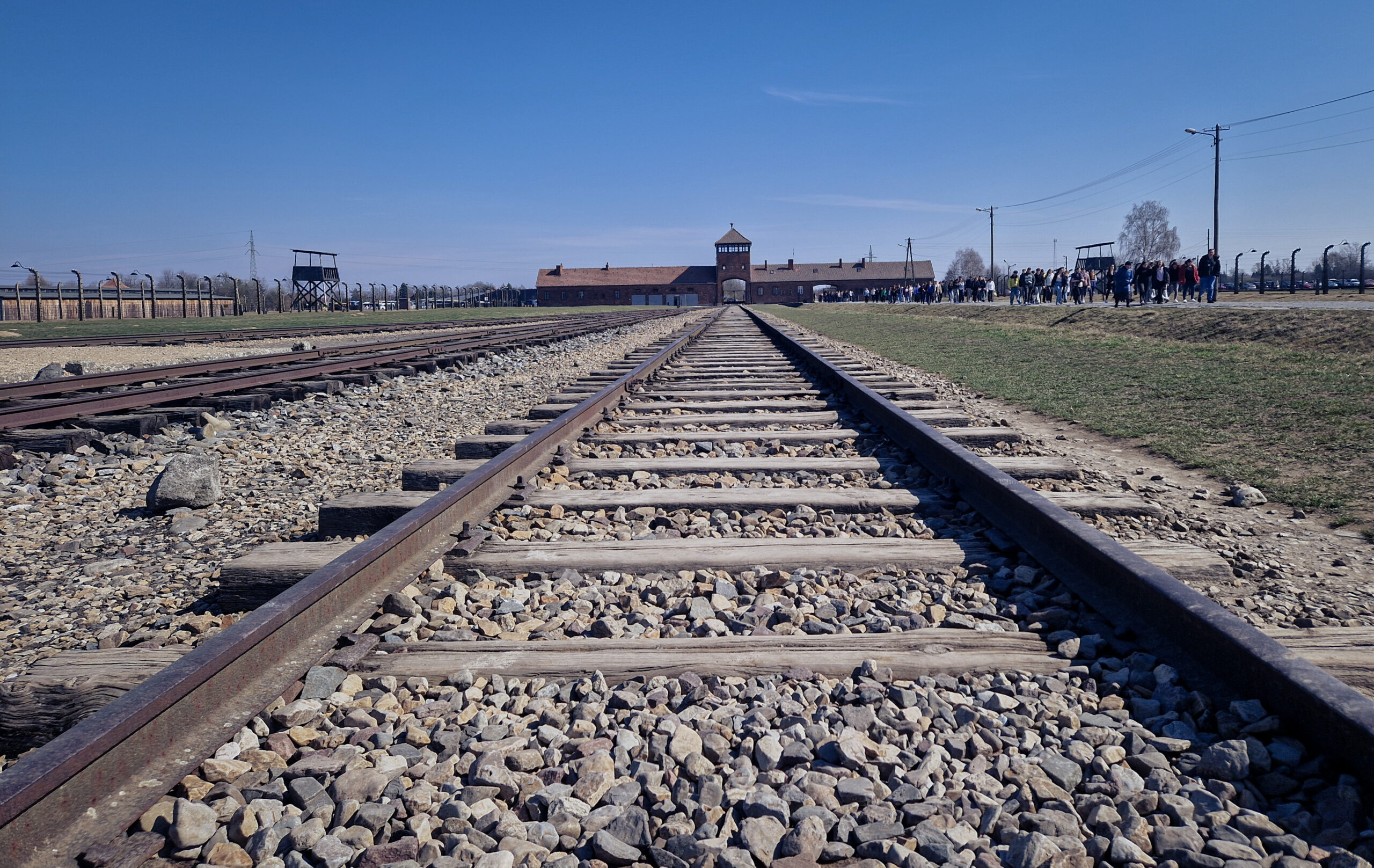

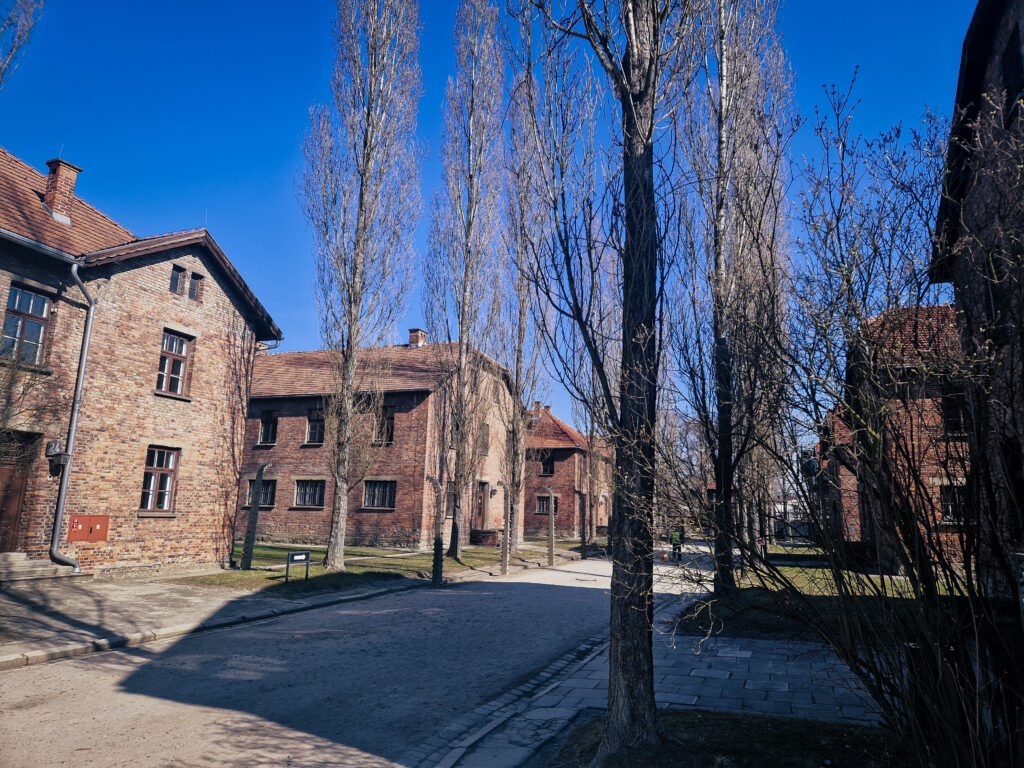
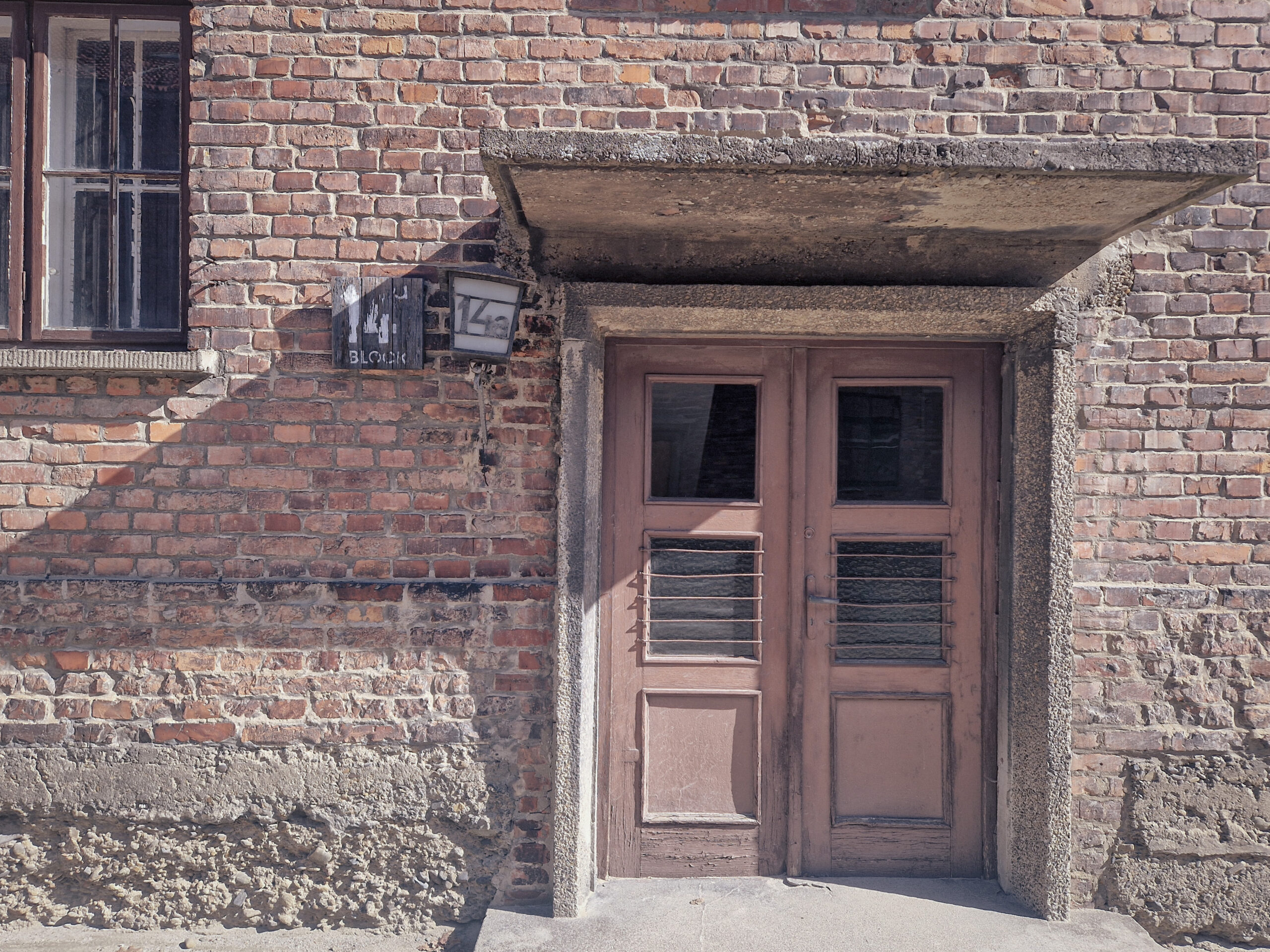


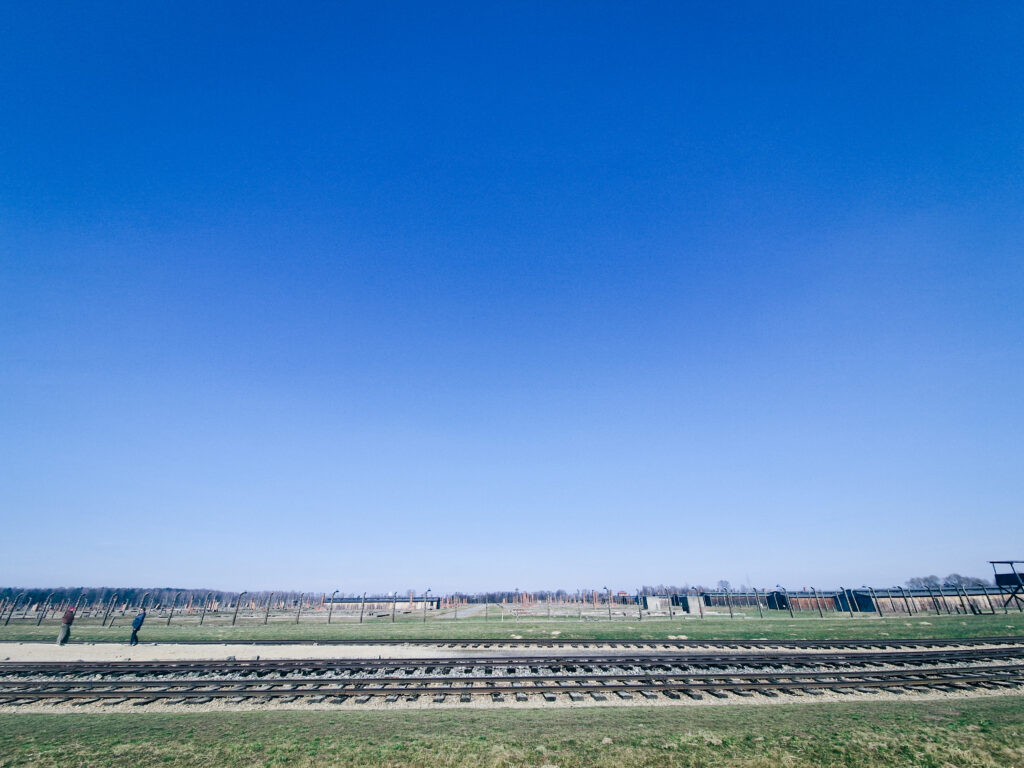


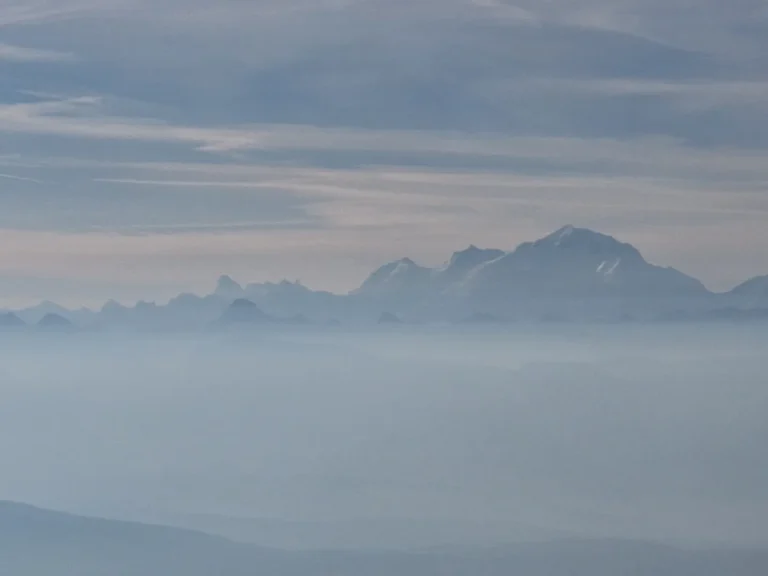


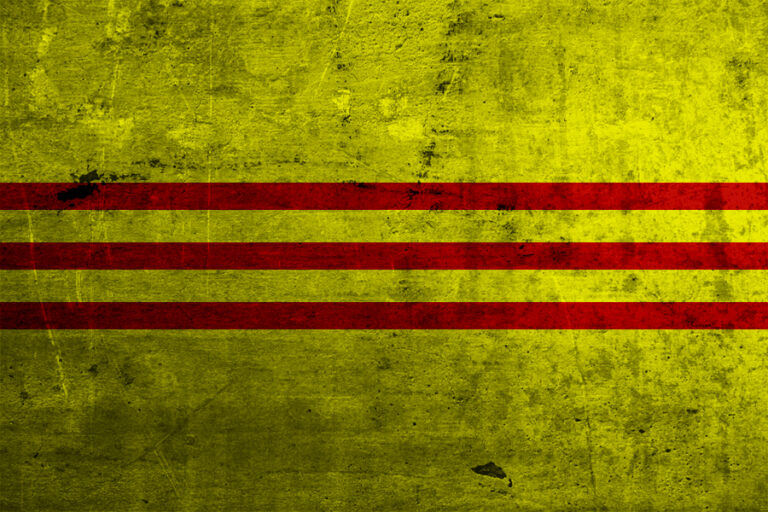


Thank you for your beautiful, heartfelt poetic piece. Again I felt that I was there with you. So sad. We visited Dachau when we were in Germany. Viewing the remaining bunk houses, gas chamber, and gully nearby was heartbreaking. It was interesting to see that on the grounds surrounding the site are chapels or memorials from various denominations of Christian churches. a large Jewish memorial and a small Catholic Church and monestery where Carmelite nuns practice intercessory prayer for past and present. The museum with artifacts, murals, and books gave historical perspective. Also had the iron gate work will make you free. You brought to mind walking in the gravel on a sunny summer day while witnessing such a sad place. Love you!
It really is sobering to think about. And something that could happen again is the chilling part. We may have better “stuff” than in the 40s, but we are no better humans.